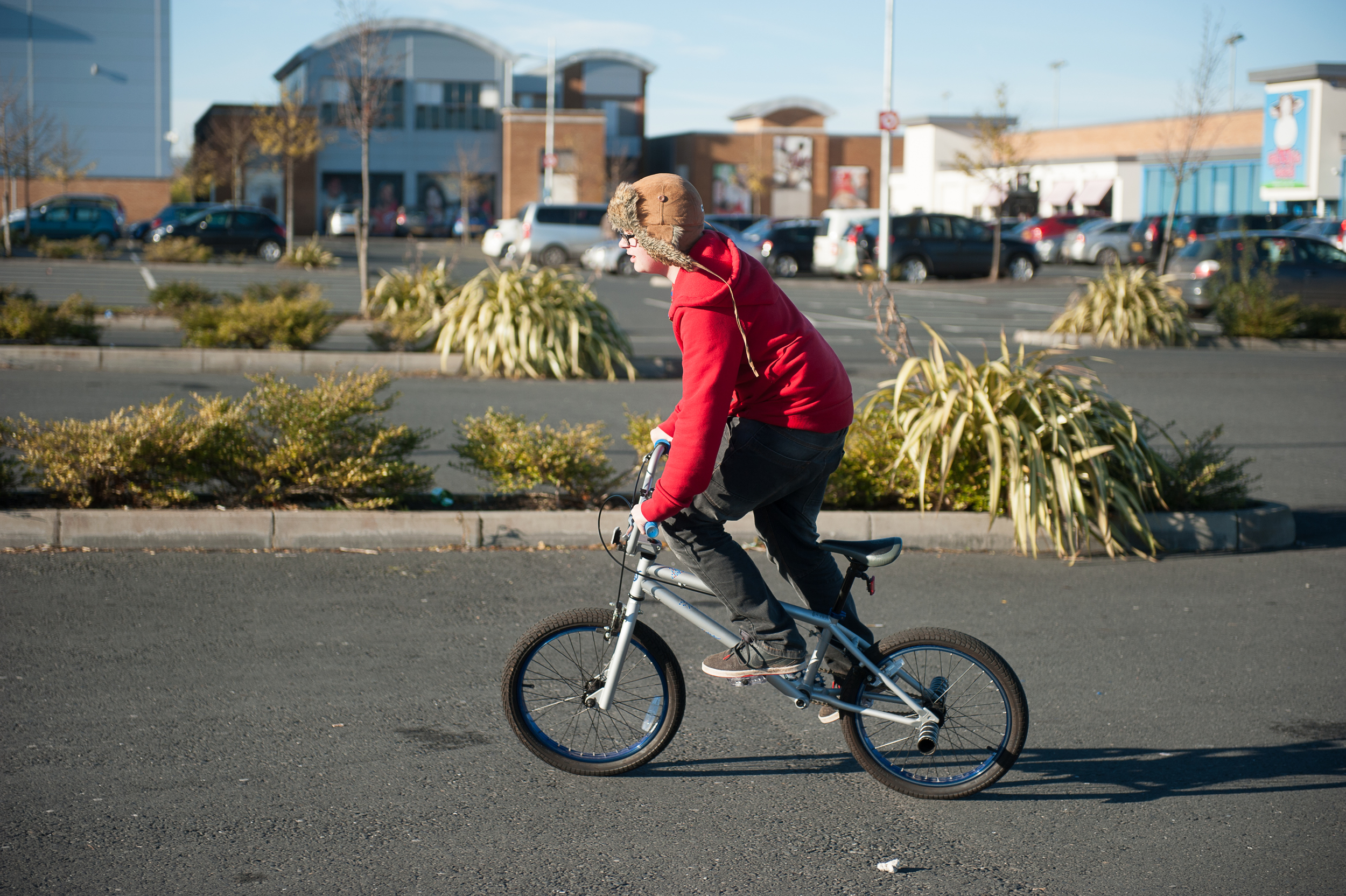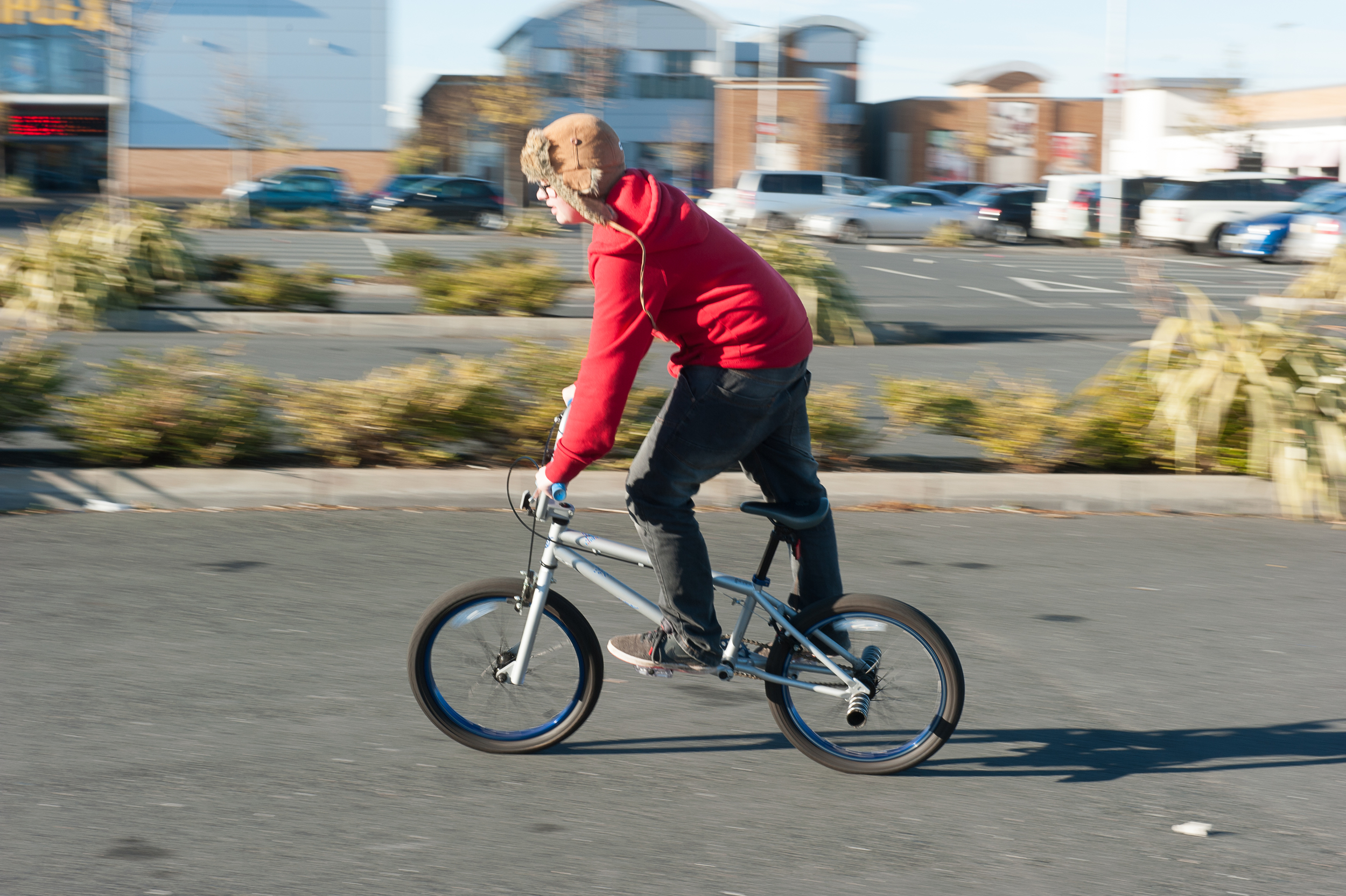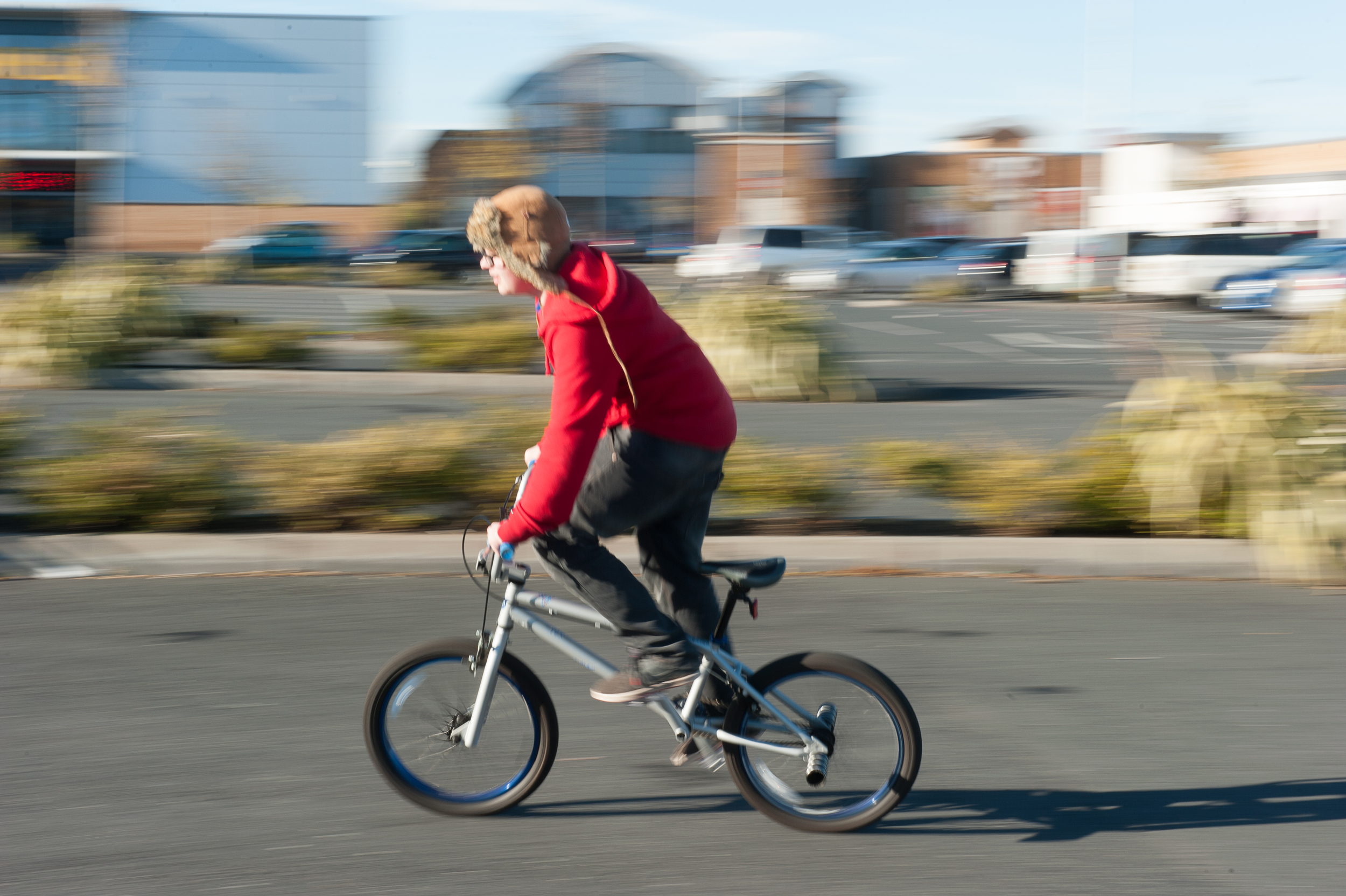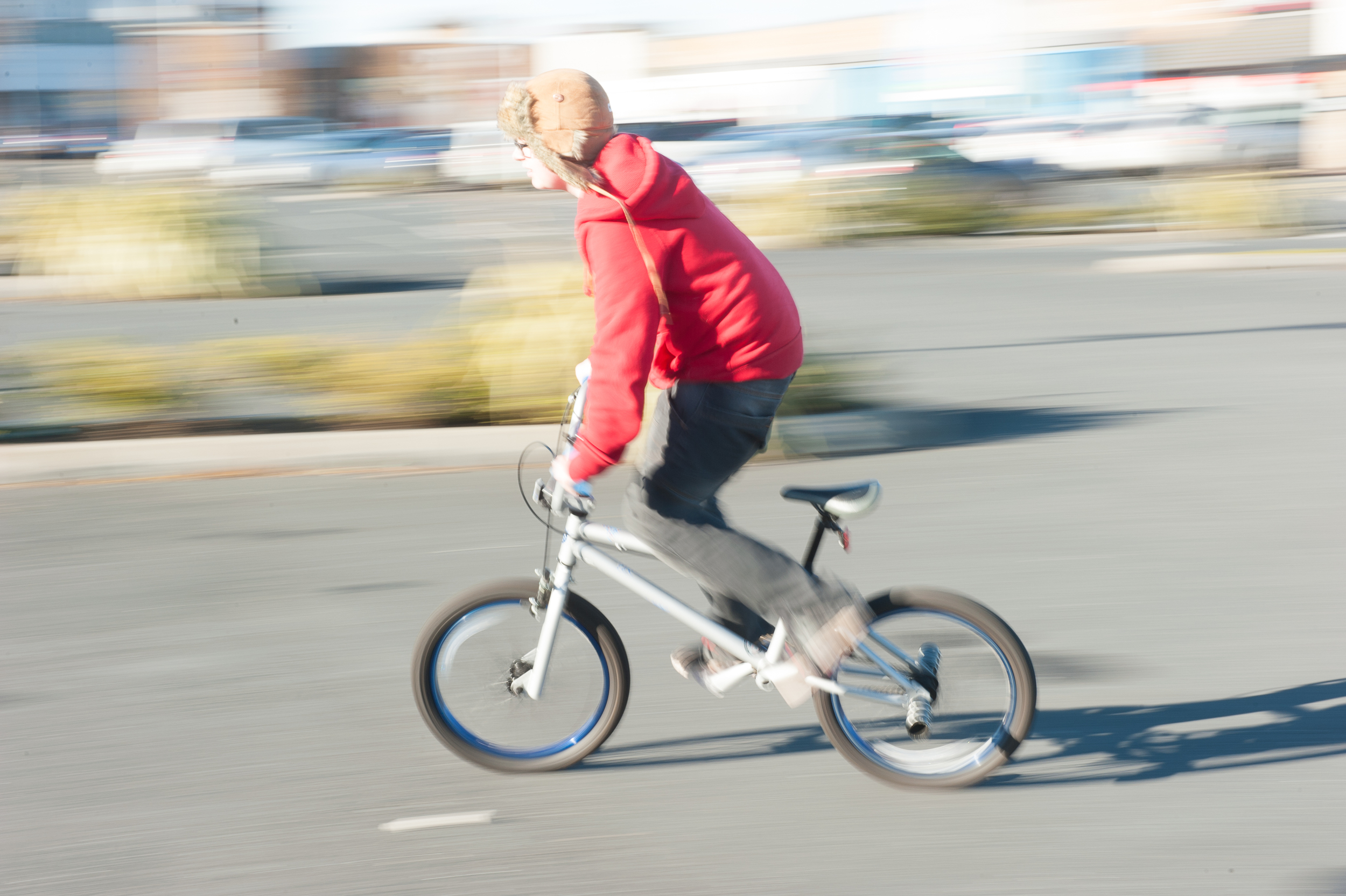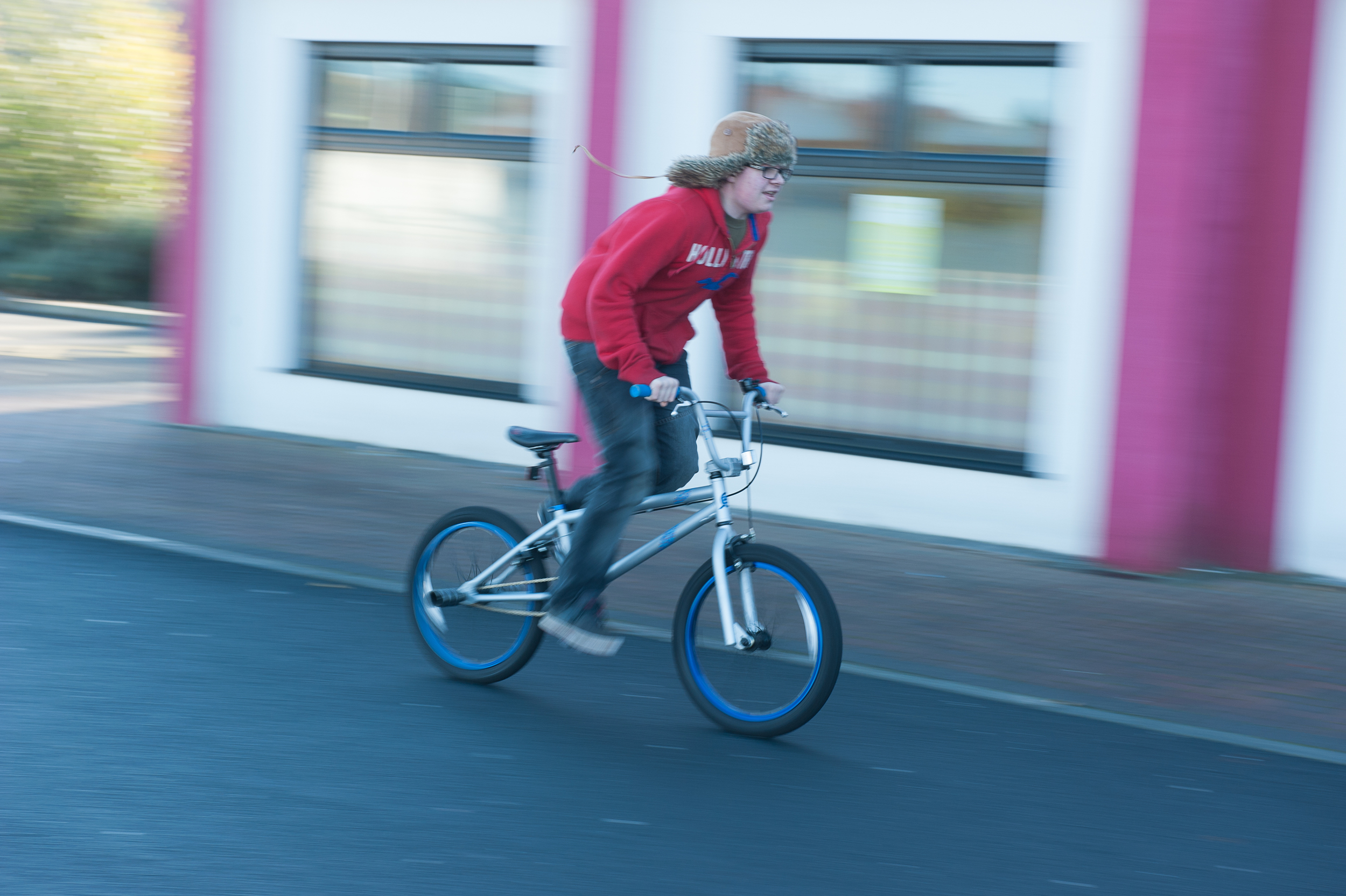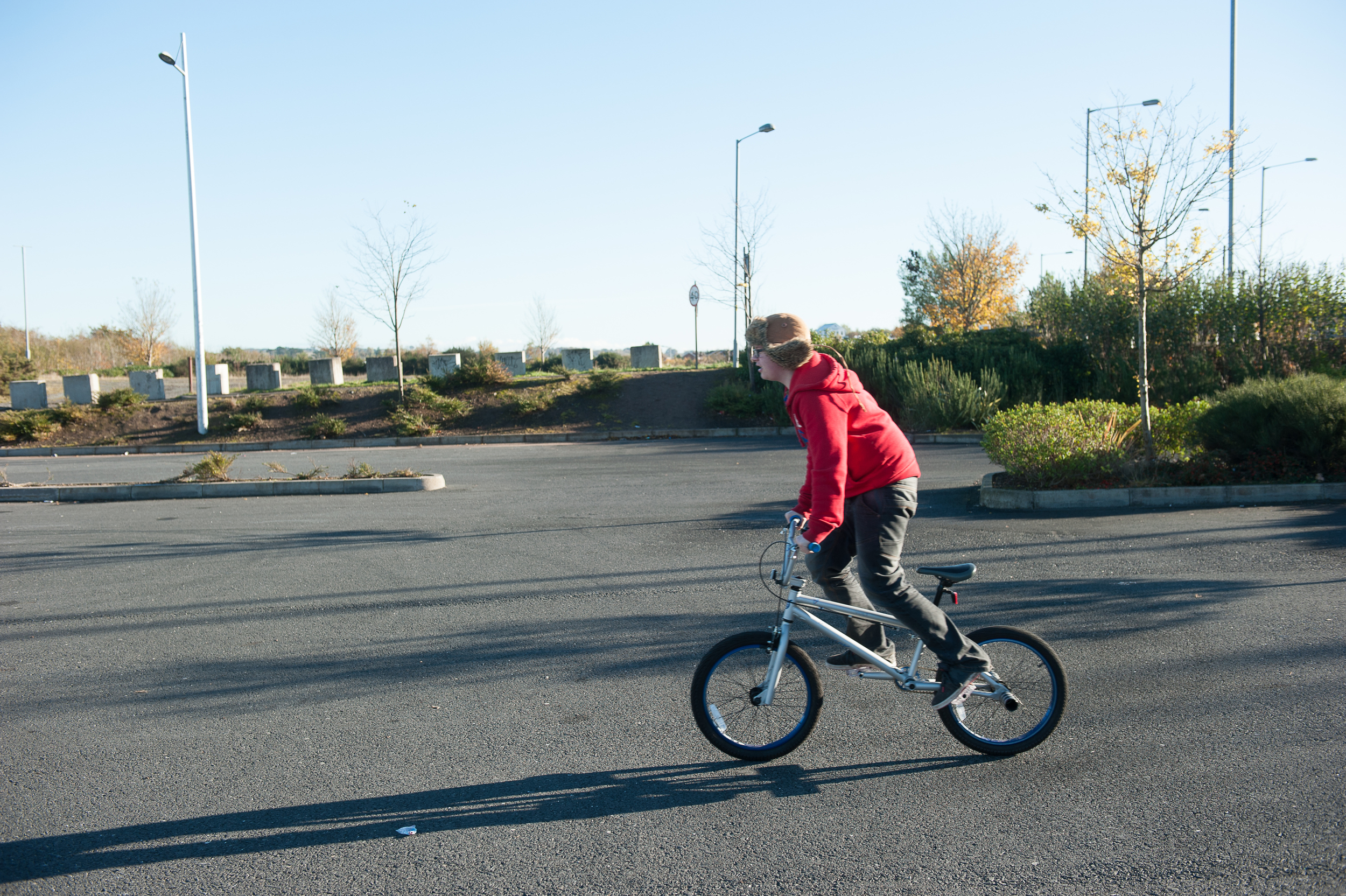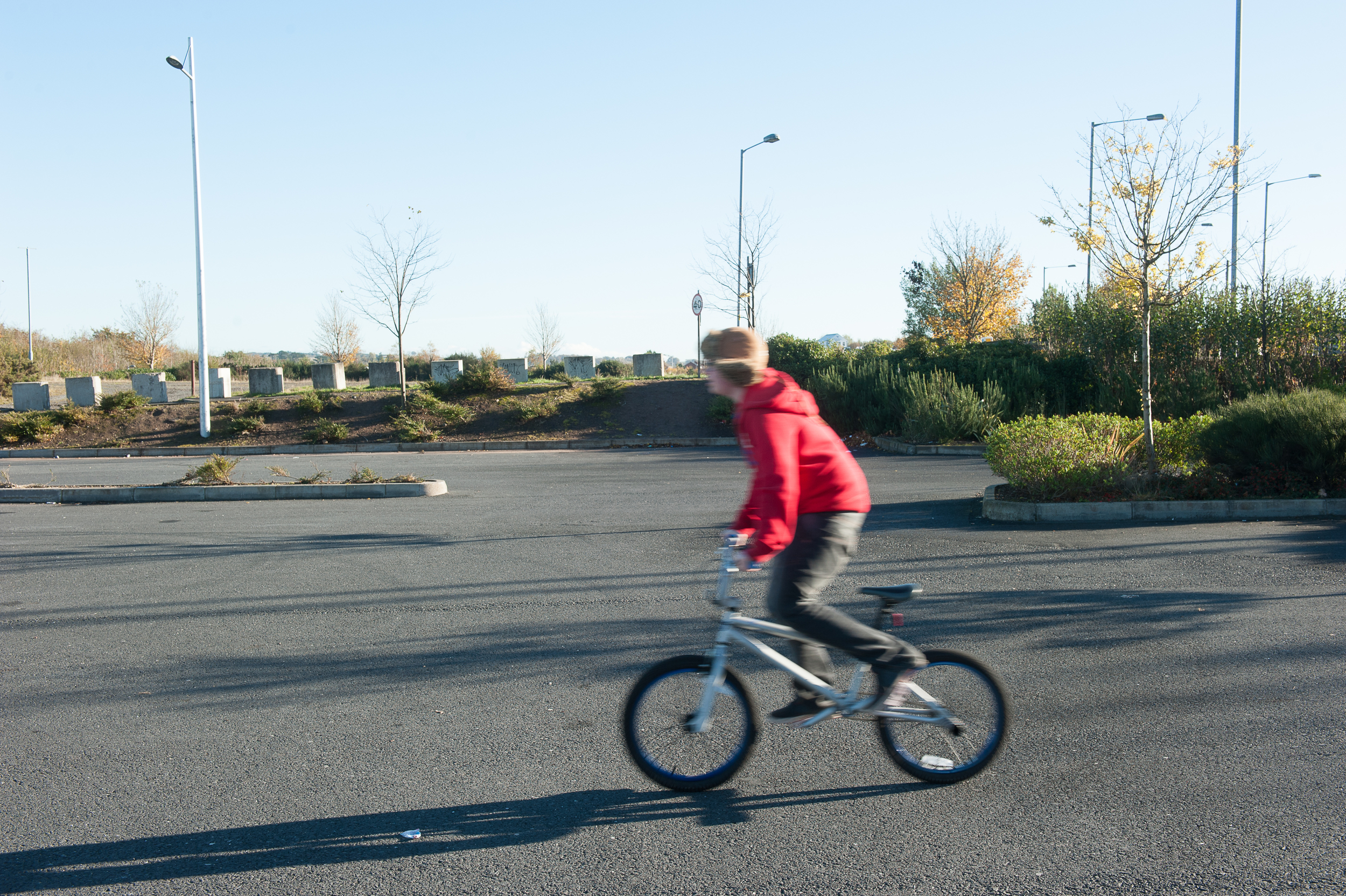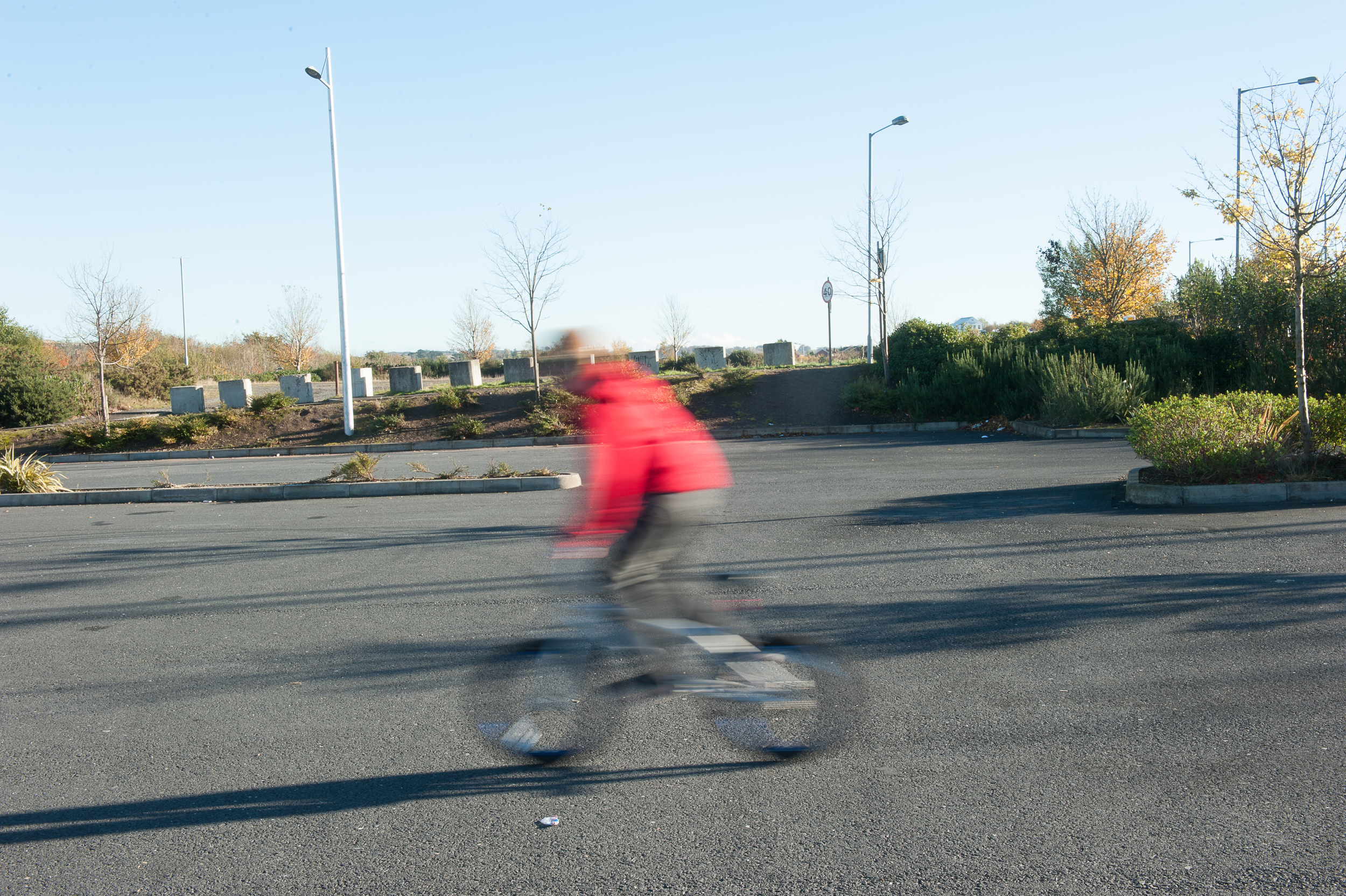The aim of this exercise was to use a panning technique whilst reducing the shutter speed for each incremental photograph and thus showing the effect of motion blur on the background. I remember trying this when I got my first digital SLR, and being extremely disappointed with the results. Coincidentally I was using exactly the same subject for that first attempt as I used for this exercise. As with the previous exercise or movement I took around 15 photographs but I will only use four to illustrate the point.
I found the tripod method very difficult as the legs of the tripod were starting to collapse so I removed the camera and carried out the exercise handheld. As you can see from the photograph above the spokes are frozen, the cyclist is frozen, and there is no motion blur in the background. There is some level of blur in the background but this is due to the depth of field rather than the motion of the camera as it follows the cyclist. For this to be motion blur we would expect to see a streaked appearance as you will see in the later photographs. Motion is frozen due to very high shutter speed 1/2000 of a second.
It isn't until we get down to a shutter speed of 1/100 sec that we start to notice motion blur and the background, it is also interesting to note that at this speed we are also getting motion blur in the subject similar to the previous exercise (this can be seen on the spokes of the wheels).
In the third photograph another element of blur is added, that of “camera shake”. This is evident due to the fact that although the cyclist’s head isn’t moving with any great speed and should be captured as sharp due as a pan, it is clearly out of focus because hand movement becomes a factor at shutter speeds of less than 1/60 of a second.
In this fourth photograph we can clearly see a very pronounced effect of motion blur on the background. You will also note that the photograph is overexposed and this is because the camera has adjusted the f-stop to the f/22 but because the shutter speed is so low more light is heading the sensor and overexposing the image. We can also see the blurring of the spokes and the reflectors attached to the spokes and the winds themselves but there are is no streaking or deformation to the shape of the wheel because the camera is panning with the subject.
So which of the photos in the series that I prefer. The answer is they are all dreadful. As I was chimping at the back of the camera I realised they were all awful and decided that I wanted something better to finish this blog post on. So we moved closer to the buildings I asked the subject to increase his speed. The result is the photograph below which is probably exposed. The subject’s head is relatively sharp because the panning is reasonably accurate. The subject's legs and wheels are blurred due to the fast motion. The leather is tie on the hat flowing out behind the subject also adds to the sensation of speed in the photograph.
